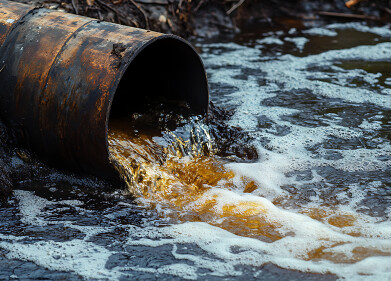Water/Wastewater
Are “Atmospheric Rivers” Killing Off Oysters?
Feb 15 2017
While the likes of tigers and whales get all the attention from endangered species campaigns, the plight of the oyster is one that is relatively unheard of. A number of problems have led to dwindling oyster numbers of late, and so-called ‘atmospheric rivers’ are partly to blame. But what are they – and why are they such a problem?
The world of the oyster
Like many foods, overharvesting has been damaging to oyster numbers. But living in water-based habitats, oysters are also affected by changes to the world’s water. Two problems that have been particularly destructive in this sense are climate change and the acidification of oceans. Oysters simply cannot survive when their habitat becomes unsuitable.
And this has a knock-on effect. Oysters are what’s known as an ecosystem engineer. They regulate and support parts of the environment, ensuring that habitats are suitable for other species. Water filtration, nutrient recycling and habitat structure are all key parts of oyster’s environmental importance. Without them, there would be a significant reduction in biodiversity.
Monitoring oysters
It’s this environmental importance that makes it essential for scientists to monitor oyster populations. And biologists at the University of California have monitored the oyster beds along the northern coast of San Francisco Bay for several years. When the tides go out, the oyster beds become exposed in China Camp State Park, meaning the researchers can move in and count the shellfish.
But the counting wasn’t so straightforward in March 2011, when all of the oysters died suddenly. Why? According to their research, there was no particular shift in the water’s acidity or temperature. There was, however, a number of storms on the coast of California around the same time.
The cause of the storm
Atmospheric rivers are narrow gatherings of moisture, which can seep through the atmosphere and lead to severe storms. This was the case for the March 2011 storms, which caused a large influx of freshwater, researchers have concluded, and powerfully diluted the salt water. Because oysters need a certain level of salt content to survive, they were wiped out indirectly by the atmospheric rivers when the salinity became too low.
Across the pond
In the UK, our storms are relatively calm, but over the past few years, flooding has become a regular occurrence. It’s clear we need to adapt, but how? The article, ‘What we can learn from 2015/2016’s extreme flooding?’, explores how – over time – we can improve the way we forecast, prevent and deal with floods.
Digital Edition
AET 28.4 Oct/Nov 2024
November 2024
Gas Detection - Go from lagging to leading: why investment in gas detection makes sense Air Monitoring - Swirl and vortex meters will aid green hydrogen production - Beyond the Stack: Emi...
View all digital editions
Events
Dec 02 2024 London, UK
Dec 03 2024 Dusseldorf, Germany
Dec 11 2024 Shanghai, China
Jan 12 2025 Abu Dhabi, UAE
Jan 14 2025 Abu Dhabi, UAE













.jpg)





